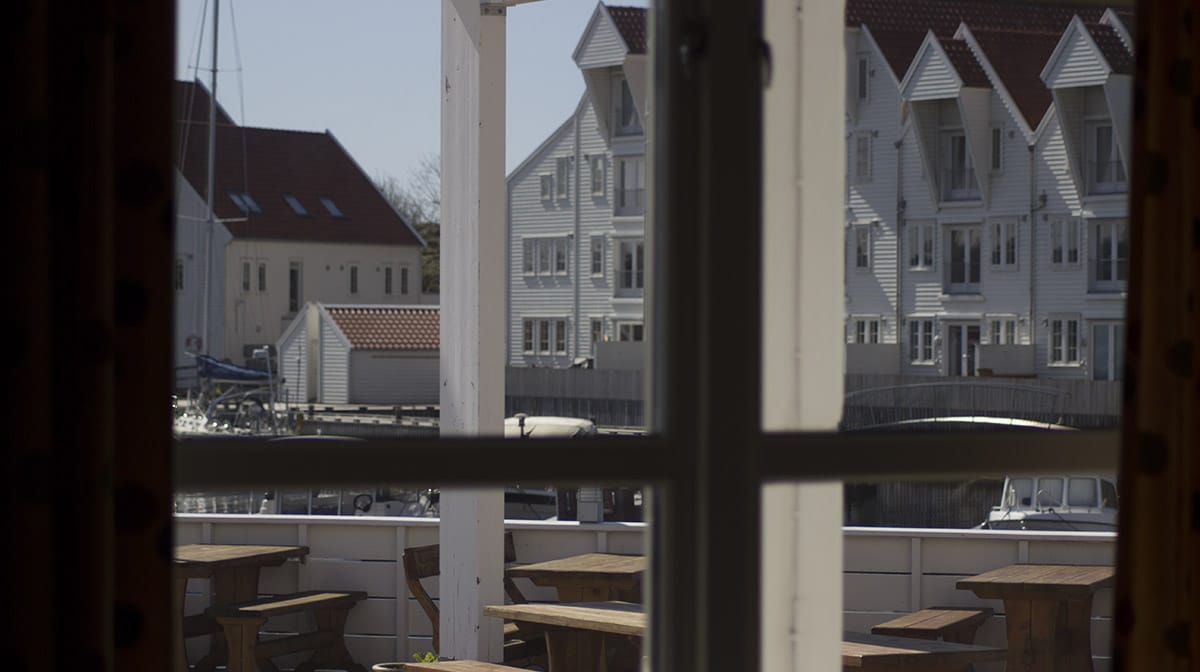Tananger's history in brief

From the first mention of Tananger in 1608 to today's oil adventure, Tananger has had an incredible and exciting history.
Here is a brief overview of some of this history:
Since time immemorial, Tananger has been used as a safe harbour in which to seek refuge if the weather took a turn for the worse. But it was only after the value of the lobster as an export item, around 1650, that the place was settled. Prior to this, people in the area around Tananger had salted and dried lobsters for their own use. Could this be a new Saturday snack? "Kari i Hafnen" is mentioned in a probate after Laurits Rott on 25 February 1684. She is the first person we know of living in Tananger. We first hear about trade across Tananger on 2 September 1623, when a Dutch skipper illegally docked here and sold salt to the farmers.
The first known lobster export from Tananger took place when the Dutch skipper Bernt Martens brought a shipload of live lobsters here in 1672. After this trade, first the Dutch and then the English regularly visited Tananger in search of lobsters. Around 1860 and 1870, 6-10 boats came from England and brought around 100,000 lobsters annually!
The Dutch were also in Tananger looking for a different and slightly more unusual item to sell. At the beginning of the 18th century, they bought a number of shiploads of stone from Meling. It is said that this stone was used to build Amsterdam harbour.
Since then, Tananger has gone from strength to strength, initially fuelled mainly by the lobster trade, later supplemented by other trade, fishing and finally the oil industry. Due to the enormous trade across Tananger, a sub-customs station was established in Tananger in 1777, which in turn was part of the Stavanger customs district.
As the best and deepest harbour north of Egersund, Tananger gained an early reputation among seafarers. There are no figures for all the ships that have sought refuge in and after bad weather.
In 1865, more than 4,000 fishermen gathered here due to bad weather! In the whole of Haaland (Sola municipality), we only had around 2,500 inhabitants at that time.
In the same year, there were 165 inhabitants registered in Tananger. Larger ships were also moored here in anticipation of better weather, blown here on their way to and from distant and exotic harbours. In this way, the inhabitants of Tananger, earlier than elsewhere, came into contact with new commodities and unusual products such as tobacco, coffee, tea and the like.
Many ships didn't even make it to Tananger; they were stranded in the dangerous archipelago below. They were often rescued by the local pilots or the pilots from Rott. Several of the houses mentioned in this guide were built or inhabited by the local heroes, the pilots. These heroes of the sea will be honoured by the Tananger Memorial on 1 January 2000. We then unveiled a statue of a pilot on Risberghaugen, right in front of the old guard hut in Tananger.
After each stranding, a maritime court was held in Monsen's house, which is the oldest house in Tananger. This is where the pilot himself lived. Since 1797 and until 1909, the Monsens have held this title. This family has had a major influence on Tananger's growth, through trade and shipping.
War has periodically contributed to temporary population growth.
During the Napoleonic Wars, a detachment of rowed gunboats was stationed here. They were several times in conflict with English warships, which were chased every time! At Storevarden, a large mast and watchtower were placed as part of an optical telegraph line from the Swedish border all the way up to Trondheim.
During the First World War, we also had Norwegian warships stationed here, this time as a neutrality guard, without them getting much exposure to the war itself. When the Second World War broke out, it was the German invasion forces that were responsible for the population explosion. Several of the houses you will see were occupied by the Germans during the war. More about this later....
In 1965, Aker-Norsco started as a supply company in Tananger with three employees. The oil industry had arrived and a new era in Tananger's development had begun.
If you would like more details about Tananger's history, please contact Tanangers Minne or Kystkultursamlingen i Tananger. The same applies if you have additional information.
Source: Tananger Memory
